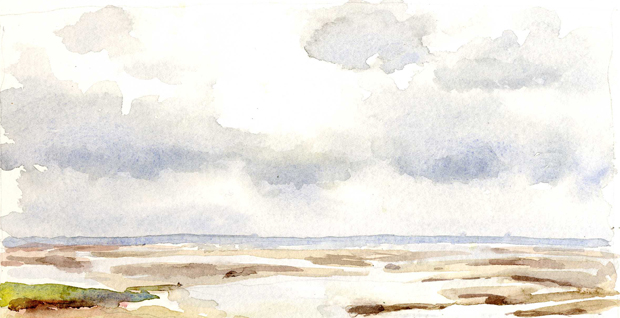A spring storm battered Baltimore for two days in April 2014. After a record-setting winter of Arctic cold and snowstorms that broke water mains and opened potholes, the second day of rain fell in a deluge, flooding roads and softening the ground beneath the crust of asphalt and concrete. In one neighborhood block, the parking lane began to sag, cars listing to starboard against the curb. A small crowd gathered in the rain to document the event on smart phones and trade complaints.
“I’ve been trying for three years to get it done right.”
“We’ve got hundreds of pictures of this. They’ve been out here ten times and all they do is try and fill it in.”
And then, as they watched, everything exited the scene: street trees just leafing out, wrought iron light poles, cars, paving, fence, and stone retaining wall slid twenty feet to the railroad tracks below. Cries of alarm and outrage erupted on the video as a plume of dust rose and subsided.
Water, physics and gravity had claimed another piece of infrastructure, leaving behind a gash of sodden earth, a phalanx of first responders, and yellow caution tape. The mayor, wearing an Under Armour baseball cap and a weary expression, held an impromptu press conference, sounding her talking points of safety, committing resources and fixing the problem.
At this same time, as if my heart and mind are carrying on a hidden conversation with the storms, I am buffeted by questions. How can I use the skills and experience I have amassed over years of apprenticeship and work to help usher in the new stories? What can I possibly do in this world that won’t perpetuate the old stories of separation and superiority, stories that our entire civilization is built upon, which sanction certain types of behavior and ridicule and condemn others? I am feeling hopeless and trapped, possessed by the paradox of living in a world I no longer believe in. Writing is good work, but doesn’t (so far) pay the bills. I still need to drive my car, heat my house, charge my electronics (made, by the way, with conflict minerals).
My fascination with the catastrophic suddenness of the sinkhole has the quality of rubbernecking a highway accident, far beyond a simple “there but for the grace of God go I” kind of reaction. It won’t let me alone until I entertain the possibility that it’s a reflection of what I’m experiencing internally. Doubts that can no longer be papered over collapse under the weight of my unwillingness to be complicit in mistaken and damaging cultural stories.
Beneath the crust of industrial civilization, new seeds of balance, kinship, and compassion germinate in the dark soil. As the thick covering of domination cracks and falls away, new stories can take hold and grow – but only when we resist the easy solution of paving back over them to restore the old order.
This particular wall and street were rebuilt and the trees replanted, good as new. Engineers assessed the rest of the wall and wrote sober reports with calculations and recommendations. The insurance companies came and the court cases apportioned the blame. What choice did they have? The city and the train must keep running.
There is no better illustration of the way we must now live in this interim time. Measures like restoring a fallen 19th century portion of city may be our best option, until the new stories are strong enough to rise and stand on sturdy legs. I would do well to find my own interim measures. I could choose to approach my work as an architect with all outward signs of compliance, while continuing the search for another way of being. It’s a tricky dance, to break free of allegiance to the story of progress and human ascendancy, while still resisting the apathy and depression that its opposite, dystopia, engenders. I have to trust that there will be a whole spectrum of possibility between the two.

